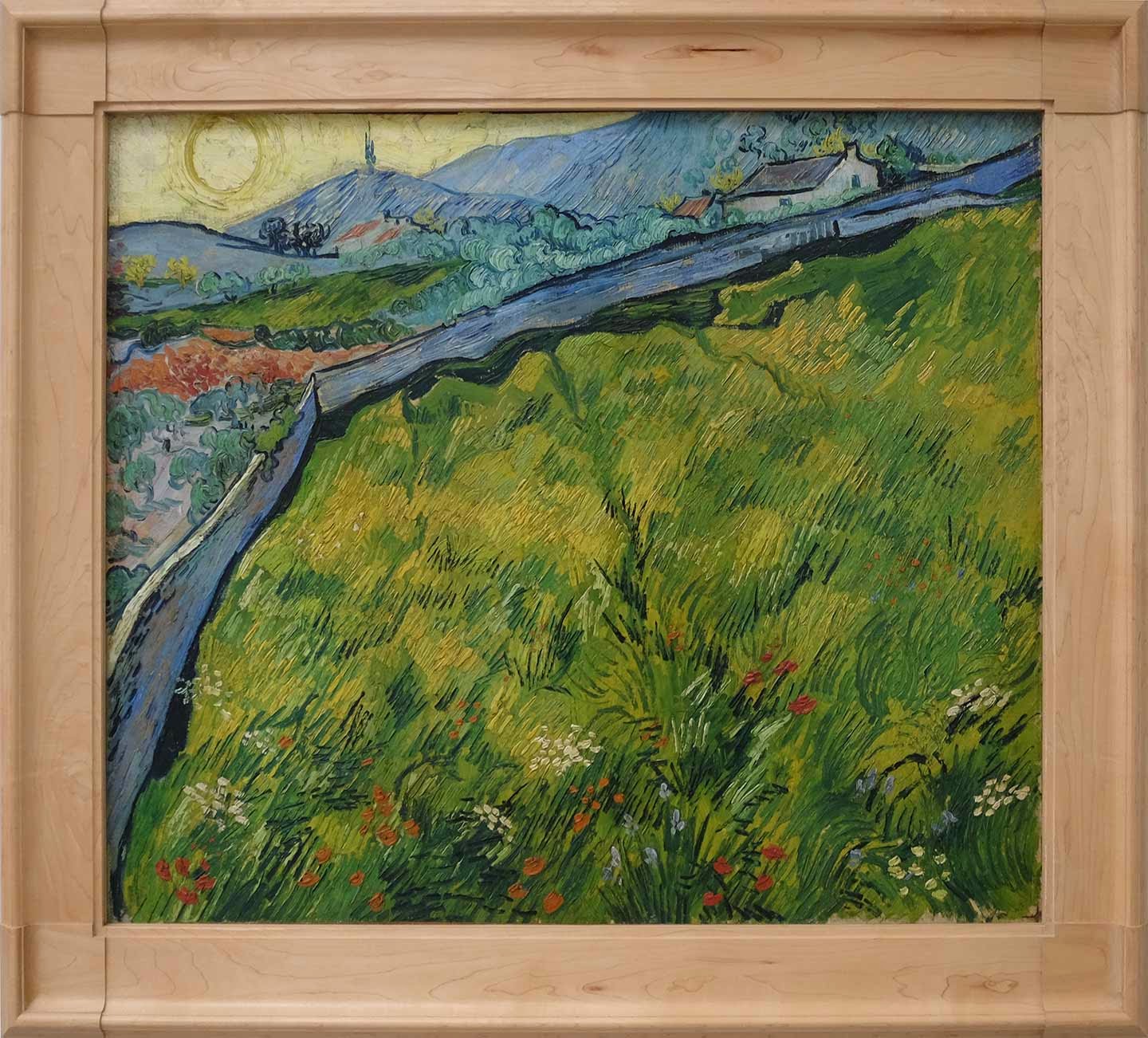
 |
| Section of my painting with palette strokes and brush strokes. |
DID Van Gogh load his brush? Most assume he didn’t–but used the standard technique of picking up paint directly from the palette (watch how to load a brush here). I suspect he used ample amounts of paint to more easily get broken color on his brush and onto his canvas (small piles of paint lead to cramped, tight painting with monochromatic strokes).
Fellow painter Erik te Kamp went to the Kröller-Müller Museum in the Netherlands and took several close-up photos of Van Gogh’s work. Erik noted that the paintings are over 125 years old and some passages look a little transparent. Because Van Gogh never varnished his paintings you can see an accumulation of dirt in the paint strokes (learn how new methods improve varnishing for modern painters here).

The next image–courtesy of Eric te Kamp and the Kröller-Müller Museum–is a painting by Van Gogh entitled Green Field. (Incidentally, I love the maple frame. I compliment the museum on such an apropos presentation).

In the following image—where you see dabs of color representing flowers —some dabs have brush marks and some don’t. This is an example of Van Gogh painting with paint rather than with the brush. Meaning that so much paint was on his brush that no bristle marks were impressed into the resulting strokes.
There is controversy about whether Van Gogh was right or left handed. I guess from this painting that he was right handed. Van Gogh was a bold painter, and the grass strokes would have been less consistent if he were holding the brush in his left hand. This is also corroborated by several self-portraits of Van Gogh holding the palette in the right hand. Which would have been reversed since he would have been looking into a mirror to paint his portrait.
It is possible that he used his left hand for palette knife work but I see no evidence of that. Portraits of Vincent also show that he used generous amounts of paint on his palette. Which is good practice if you want to have lots of broken color in your paintings.
Many thanks to Erik te Kamp for the fascinating close-ups of Van Gogh’s work. He sent me more images, and I will analyze them in future blog entries.
If anyone is close to a museum featuring paintings of J. M. W. Turner and would be willing to take similar photos, I would love to do a similar analysis of his work. Many thanks in advance for your help.
Brad Teare–October 2014
——————————-
